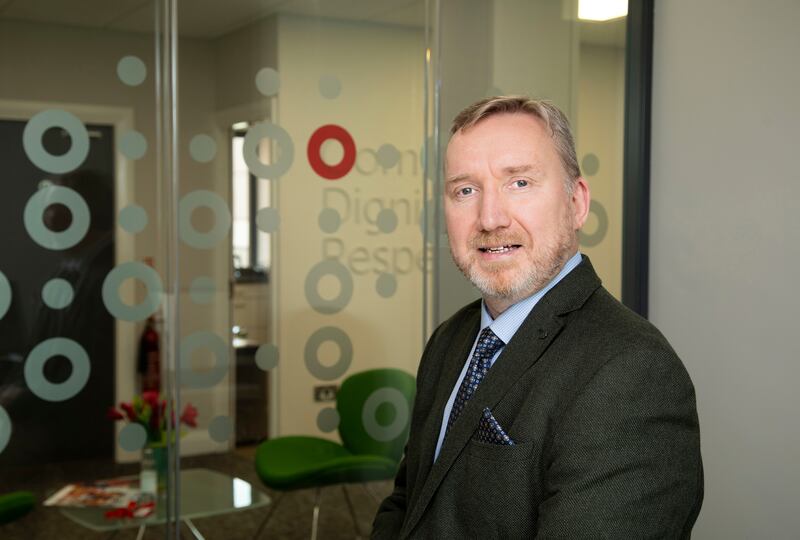Ireland is not alone in having a fragmented healthcare system, reflecting the piecemeal evolution of such systems over the decades. But, like other countries, it is now endeavouring to integrate all aspects of its health and care services, so that patients can enjoy continuity of care that is more personalised and will ensure better outcomes.
Dr PJ Harnett was recently appointed as Mowlam Healthcare’s head of integrated care. As a previous national programme lead for integrated care for older people with the HSE, he is uniquely placed to deliver on Mowlam Healthcare’s strategy to deliver diverse community-based care services to support the needs of the Irish healthcare system and our ageing population.
Mowlam Healthcare is the largest independent Irish provider of nursing home care in Ireland and operates a “continuum of care model”, whereby, as a person’s care needs change as they age or become unwell, they can be met. Services include respite, rehabilitation, long-term care and palliative care.
Developing integrated care means working in a more planned and collaborative way with the whole health system to ensure better access and continuity, and co-ordination for the service user, leading to outcomes that matter to them. Dr Harnett says the health service has successfully improved outcomes for acute illnesses – heart attacks and strokes, for example – but is less equipped to treat patients’ with care needs over the long term.
READ MORE
However, changes are happening in healthcare internationally that involve “focusing on local populations and seeking to implement integrated care as an approach”, Harnett says, citing trends in the UK, Canada, Singapore and New Zealand as examples.
“The concept of compassionate communities, looking after older people, with the health system working in partnership with others, is taking root in communities all over the world,” he adds.
Ireland’s health service is much-maligned, with issues from long waiting lists to bed shortages attracting criticism. Yet Harnett says there are many positives to Ireland’s health service that will be invaluable as it begins the shift to integrated care.
“The prevailing narrative about the health system not working is not entirely accurate because in Ireland we have the longest life expectancy in Europe,” he explains. “We have fantastic pathways for cancer and heart disease now and they have been very successful.”
The fact that Ireland has a unified health and social care system – which is not the case in all jurisdictions – is another advantage, Harnett adds. We also direct substantial investment towards enhancing community care.
But Ireland, in common with many other countries, is also grappling with a rapidly ageing population; gains in life expectancy bring new expectations and a need for a different approach. These changing demographics are also making care more complex.

“With an ageing population you have many more chronic diseases and multi-morbidities,” says Harnett. “So, when patients become ill and go to hospital they are not just being treated for a single condition.”
More than 200,000 people aged over 75 years will present each year to an emergency department, he adds, while a multiple of that number will be treated in community health networks.
“What we need to work towards in Ireland is an integrated system that recognises those changing profiles of health presentations and then design systems to deal with that in the coming years,” says Harnett.
How to achieve this? Firstly, there is the ongoing implementation of Sláintecare, with its aim of providing universal access to timely, quality integrated care for everyone in Ireland. But ultimately what is needed is an “age-friendly health system”, says Harnett.
“The HSE’S chief clinical officer, Dr Colm Henry, often uses a great phrase, that ‘older people are the health service’s purpose and not its problem’. We need to recognise the extent to which they are now being the dominant customer of the health service, both in primary care and in our hospital,” he adds.
The World Health Organisation has decreed that this is the “decade of healthy ageing”, Harnett says. “It would be amazing if Ireland could become the first age-friendly health system in the world,” he adds.
The nursing home expert panel report carried out in the wake of the Covid pandemic pointed to a need for greater integration between people living in residential care and their local communities.
“It said that irrespective of whether they were in public or private facilities, they should benefit from the local health system,” says Harnett. “Mowlam Healthcare is recognising that the future of healthcare and especially the care of older people has to reflect that international policy on integrated care.”
He says the nursing home sector has a huge role to play in terms of community rehabilitation for older people.
“Roughly about 12 per cent of people who leave hospital will need some form of inpatient post-acute rehabilitation,” he notes. “That’s an area that is under development by national clinical leaders such as Dr Emer Ahern.”
As the transition to integrated care continues, Harnett says all stakeholders are part of the solution, as exemplified by the Covid 19 response.
“We need the public system, private system, local community agencies, local authorities and innovators in digital health to work together to provide those solutions,” he says. “This will collectively result in an ecosystem of care that joins the dots and brings all the different elements together in a way that’s greater than the sum of its parts.
“Because one of the biggest challenges is not necessarily that we need extra resources but rather that we work together with an asset-based approach to create a cohesive system that works for everyone.”
To find out more about Mowlam Healthcare’s suite of services visit mowlamhealthcare.com













